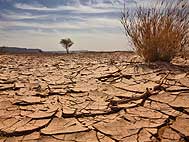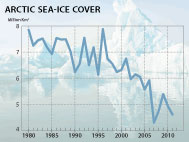| SEARCH |
-

Nov 17, 2015
Reflections on a three-decade legacy
The International Geosphere-Biosphere Programme (IGBP) will come to a close at t...
-
Nov 17, 2015
Use of and access to content on this website
Text and images produced by IGBP in house are free to use with appropriate credi...
-
Nov 12, 2015
Bella Gaia performance and panel discussion to mark IGBP's closure
A musical performance by Bella Gaia will celebrate the achievements and legacy o...
-

Towards Future Earth:
evolution or revolution?
During its three decades of existence, the International Geosphere-Biosphere Pro...
-
A personal note on IGBP and the social sciences
Humans are an integral component of the Earth system as conceptualised by IGBP. João Morais recalls key milestones in IGBP’s engagement with the social sciences and offers some words of advice for Future Earth.
-
IGBP and Earth observation:
a co-evolution
The iconic images of Earth beamed back by the earliest spacecraft helped to galvanise interest in our planet’s environment. The subsequent evolution and development of satellites for Earth observation has been intricately linked with that of IGBP and other global-change research programmes, write Jack Kaye and Cat Downy .
-
Deltas at risk
Around 500 million people worldwide live on deltas, but many of the world's deltas are sinking due ...
-
Climate change: the state of the science
A new data visualization released on the first day of the plenary negotiations at the UNFCCC’s clima...
-
Climate Change:
the State of the Science
Videos now online from the Stockholm public forum to mark the launch of the IPCC's climate report, 2...
Hot days induced by precipitation deficits at the global scale
Proceedings of the National Academy of Sciences (2012)
Mueller B and Seneviratne S I
DOI: 10.1073/pnas.1204330109
Vol 109, Issue 31, pp 12398-12403

Abstract
Global warming increases the occurrence probability of hot extremes, and improving the predictability of such events is thus becoming of critical importance. Hot extremes have been shown to be induced by surface moisture deficits in some regions. In this study, we assess whether such a relationship holds at the global scale. We find that wide areas of the world display a strong relationship between the number of hot days in the regions’ hottest month and preceding precipitation deficits. The occurrence probability of an above-average number of hot days is over 70% after precipitation deficits in most parts of South America as well as the Iberian Peninsula and Eastern Australia, and over 60% in most of North America and Eastern Europe, while it is below 30–40% after wet conditions in these regions. Using quantile regression analyses, we show that the impact of precipitation deficits on the number of hot days is asymmetric, i.e. extreme high numbers of hot days are most strongly influenced. This relationship also applies to the 2011 extreme event in Texas. These findings suggest that effects of soil moisture-temperature coupling are geographically more widespread than commonly assumed.
IGBP closed at the end of 2015. This website is no longer updated.
-

Global Change Magazine No. 84
This final issue of the magazine takes stock of IGBP’s scientific and institutional accomplishments as well as its contributions to policy and capacity building. It features interviews of several past...
-

Global Change Magazine No. 83
This issue features a special section on carbon. You can read about peak greenhouse-gas emissions in China, the mitigation of black carbon emissions and the effect of the 2010-2011 La Niña event on gl...
-
INTERGOVERNMENTAL PANEL ON CLIMATE CHANGE:
How green is my future?
UN panel foresees big growth in renewable energy, but policies will dictate just how big.
-
UK:
'The Anthropocene: a new epoch of geological time?'
Royal Society, Philosphical Transactions A




















